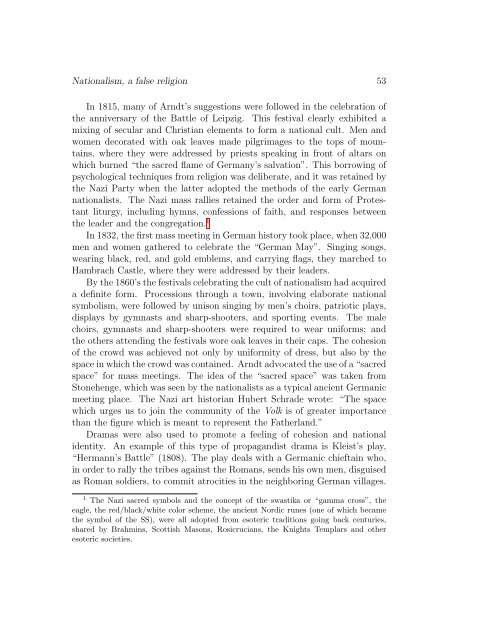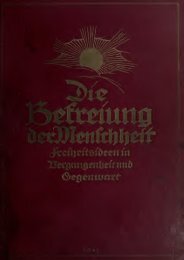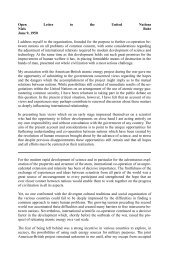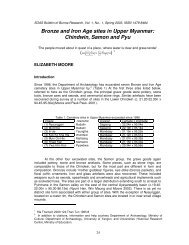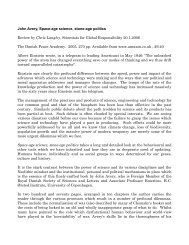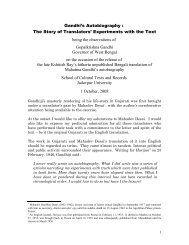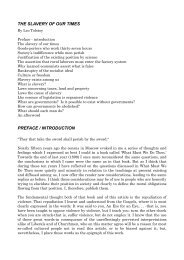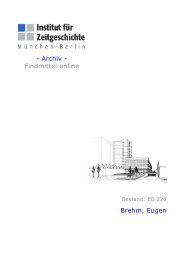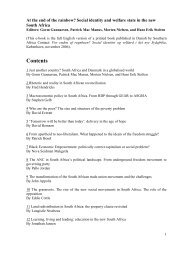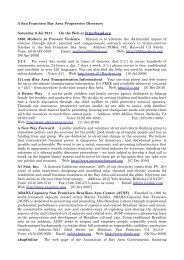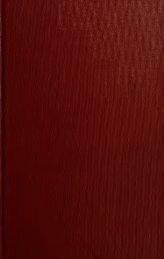Space-Age Science and Stone-Age Politics - Learning Development ...
Space-Age Science and Stone-Age Politics - Learning Development ...
Space-Age Science and Stone-Age Politics - Learning Development ...
Create successful ePaper yourself
Turn your PDF publications into a flip-book with our unique Google optimized e-Paper software.
Nationalism, a false religion 53<br />
In 1815, many of Arndt’s suggestions were followed in the celebration of<br />
the anniversary of the Battle of Leipzig. This festival clearly exhibited a<br />
mixing of secular <strong>and</strong> Christian elements to form a national cult. Men <strong>and</strong><br />
women decorated with oak leaves made pilgrimages to the tops of mountains,<br />
where they were addressed by priests speaking in front of altars on<br />
which burned “the sacred flame of Germany’s salvation”. This borrowing of<br />
psychological techniques from religion was deliberate, <strong>and</strong> it was retained by<br />
the Nazi Party when the latter adopted the methods of the early German<br />
nationalists. The Nazi mass rallies retained the order <strong>and</strong> form of Protestant<br />
liturgy, including hymns, confessions of faith, <strong>and</strong> responses between<br />
the leader <strong>and</strong> the congregation. 1<br />
In 1832, the first mass meeting in German history took place, when 32,000<br />
men <strong>and</strong> women gathered to celebrate the “German May”. Singing songs,<br />
wearing black, red, <strong>and</strong> gold emblems, <strong>and</strong> carrying flags, they marched to<br />
Hambrach Castle, where they were addressed by their leaders.<br />
By the 1860’s the festivals celebrating the cult of nationalism had acquired<br />
a definite form. Processions through a town, involving elaborate national<br />
symbolism, were followed by unison singing by men’s choirs, patriotic plays,<br />
displays by gymnasts <strong>and</strong> sharp-shooters, <strong>and</strong> sporting events. The male<br />
choirs, gymnasts <strong>and</strong> sharp-shooters were required to wear uniforms; <strong>and</strong><br />
the others attending the festivals wore oak leaves in their caps. The cohesion<br />
of the crowd was achieved not only by uniformity of dress, but also by the<br />
space in which the crowd was contained. Arndt advocated the use of a “sacred<br />
space” for mass meetings. The idea of the “sacred space” was taken from<br />
<strong>Stone</strong>henge, which was seen by the nationalists as a typical ancient Germanic<br />
meeting place. The Nazi art historian Hubert Schrade wrote: “The space<br />
which urges us to join the community of the Volk is of greater importance<br />
than the figure which is meant to represent the Fatherl<strong>and</strong>.”<br />
Dramas were also used to promote a feeling of cohesion <strong>and</strong> national<br />
identity. An example of this type of propag<strong>and</strong>ist drama is Kleist’s play,<br />
“Hermann’s Battle” (1808). The play deals with a Germanic chieftain who,<br />
in order to rally the tribes against the Romans, sends his own men, disguised<br />
as Roman soldiers, to commit atrocities in the neighboring German villages.<br />
1 The Nazi sacred symbols <strong>and</strong> the concept of the swastika or “gamma cross”, the<br />
eagle, the red/black/white color scheme, the ancient Nordic runes (one of which became<br />
the symbol of the SS), were all adopted from esoteric traditions going back centuries,<br />
shared by Brahmins, Scottish Masons, Rosicrucians, the Knights Templars <strong>and</strong> other<br />
esoteric societies.


